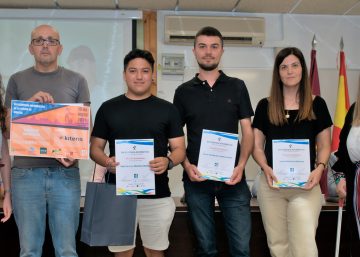Since we founded Kiteris back in 2013, we have been offering Application Management Services (AMS) to many of our clients. These AMS services have dedicated teams ranging from 2 or 3 people to up to 20 people at peak times for our largest clients.
In my previous professional experience before Kiteris, I have also worked, led, or supervised AMS software maintenance services for clients in various sectors (Automotive, Government, Tourism, Aerospace…), some of which had teams of several hundred people located in multiple countries.
We believe that AMS (Application Management Services) are a fundamental part of Kiteris’ skills and capabilities in order to offer them to our clients. “The AMS constitute a fundamental pillar in our skills and capabilities, essential for providing exceptional service to our clients.”
AMS, what is an Application Management Services (AMS) service?
I will try to define it in a simple way and with my own words, without getting into complex theoretical connotations as ChatGPT, Wikipedia, PMI®, or similar entities might do.
Within the software development and maintenance sector, services are often confused with projects and both terms are sometimes used interchangeably. This does not happen in the world of infrastructure and telecommunications where the barriers are much clearer and well-known.
A software development project is a set of grouped and related activities that have a budget, and a defined start and end date. If they are Waterfall projects, they also have the scope defined before starting. In the case of agile projects, the scope is not defined at the beginning of the project but is defined during the project’s life. More details on projects can be seen in Agile Projects and Waterfall Projects.
An AMS software maintenance service is a group of people sized based on an annual budget whose objective is to improve (evolutionary), provide support, monitor, and/or correct errors (incidental) in one or more software applications. Work is done through indivisible and independent tasks (“tickets”) that are usually prioritized by criticality or
urgency. These tickets typically have a duration of very few hours and are assigned to a single person.
What is an AMS?
We understand AMS for our Clients as an external application maintenance service, managed by Kiteris. All people management (knowledge, recruitment, training, evolution…) is carried out by Kiteris applying its experience in the sector and leveraging the extensive team of technicians on its staff, beyond those directly assigned to the specific Client service. We have a near shoring office in Cartagena (Region of Murcia) as well as in other locations in Spain.
Our AMS (Application Management Services) are based on ITIL methodology concepts through a very pragmatic and agreed vision with the Client. We use concepts such as tickets, priority, approval flow, statuses, response time, resolution time, reopening, SLA…, always adapting to the Client’s needs.
There are many tools that facilitate the execution and management of AMS services. We mainly use Jira and TFS (Team Foundation Server), depending on our clients’ preferences. These tools are generically referred to as ITSM (IT Service Management tools). It is common for the Client to provide the tools from their infrastructure since they are often shared by their staff and other AMS service providers for different applications.
For monitoring and continuous improvement of the application maintenance service, it is very important to measure KPIs and SLAs (Service Level Agreement) using reporting and analysis tools. At Kiteris, we use Power BI for cases where the Client does not already have their own tool.
AMS, Why hire our Application Management Services?
There are several reasons why we believe that hiring AMS from Kiteris provides maximum value.
Reasons to choose AMS with Kiteris
- Having an externally trained and technologically evolving team. • We offer a comprehensive 360º view of the service, not just technical aspects: Passion for service
- External management of the service by Kiteris’ Service Manager, allowing the Client to have less management burden by forgetting about day-to-day issues, such as recruitment, promotions, absences, vacations, peaks, and valleys… Including a quick transition of service.
- Lower total cost than having the same team in the client’s offices. This is because at Kiteris we use nearshoring personnel from our office in Cartagena and other locations in Spain.
- Lower structural costs due to outsourcing the team responsible for executing AMS.
- Separate and independent internal teams developing new value-added projects from Kiteris’ external team focused on maintaining current software.
We also have Clients who manage their own AMS and with whom we collaborate by offering our staff augmentation services (temporarily adding qualified technical resources to the Client’s development team for tasks such as programming or testing, for example) or Team as a Service.
For these Clients, a possible evolution would be to gradually migrate to a fully managed external AMS approach by Kiteris as our team gains knowledge of the Client’s processes and technological platform.
Challenges
In my opinion, the main challenges that an AMS faces are as follows:
- Initial transfer and transition of the service from the current provider or from the Client themselves to Kiteris. We are accustomed to carrying out rapid transitions with minimal Client involvement.
- Proper sizing of the AMS team, adapting to the evolution of KPIs and SLAs.
- Transition to AMS from various new projects that are being completed and that are carried out by the client themselves or by other specialised providers.
- Introduction of DevOps concepts in AMS services, such as SRE and Observability.
- Evolving the AMS service to gradually align it with the Client’s business needs. At Kiteris, we have a consulting unit experienced in these types of projects.
At Kiteris, we have experience and a methodology to tackle all these challenges. Having worked over the years with multiple clients in different technological and business environments allows us to offer the best solutions to successfully address these challenges.
We will be publishing new posts on how we approach these challenges at Kiteris.















